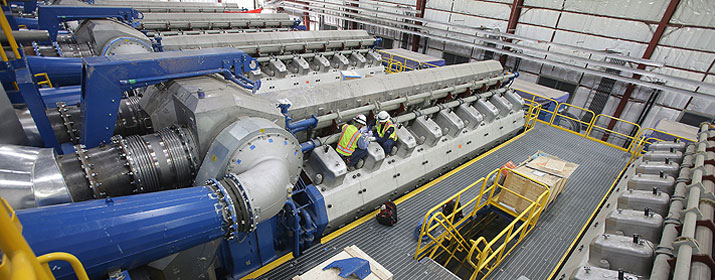
The importance of electric reliability was laid bare last month in Texas, where millions of customers suffered extended power outages during a brutal winter storm.
Tucson Electric Power works around the clock to prevent anything like that from happening here. Our commitment to top-tier reliability is reinforced by our regional grid and robust resource planning that seeks to keep enough energy in reserve to ride out challenging conditions.
Unlike Texas, which has its own, isolated electric system, Arizona is part of the western regional grid. These transmission interconnections give us access to electricity from other states, an option Texas lacked when prolonged cold weather froze natural gas wellheads and forced generators to shut down.
We also plan for a wide-range of system contingencies by keeping some generating capacity in reserve. Our reserve margin is set annually based on anticipated energy use and grid conditions and is subject to review by electric reliability organizations and regulators.
During the Texas energy emergency, we reduced our use of natural gas-fired generators to help preserve regional supply levels in an effort to avoid possible service interruptions or reductions in pressure in the natural gas delivery system.
Our new Reciprocating Internal Combustion Engine (RICE) generators provide added security under such conditions, said Sam Rugel, Director of System Control & Reliability. “The RICE generators ramp up quickly and can operate under lower gas pressures than traditional steam generators to provide power if an energy shortage occurs.”
Electric use was relatively low in Tucson during the Texas energy emergency, allowing us to rely more heavily on our remaining coal-fired generators and renewables, such as solar and wind. Our diverse energy portfolio gives us flexibility to adapt to a shortage from any one resource.
Many people don’t realize that the electric grid is essentially a real-time operation. Power must be produced at the very moment it’s used in the exact amount that’s needed at all times.
Keeping our local and regional grids stable requires continual, real-time monitoring to balance supply and demand. TEP’s Lauren Briggs, Manager of the Balancing Authority Function, said our operators track many indicators to monitor grid operations.
“One of the main indicators of stability is our Area Control Error (ACE). The closer we are to zero, the better balanced we are,” said Briggs. “If our ACE is negative, we know we’re not producing enough energy. If it’s positive, we’re generating too much energy and need to reduce generation and the amount that is sent to the regional grid.”
To anticipate energy needs, operators use a combination of load forecasts and weather conditions to predict system demand. They also rely on their experience. “Looking ahead at generation availability and scheduled energy purchases tells us if we have enough energy to meet demand.”
Meanwhile, our Wholesale Marketing Operations helps secure energy from other suppliers when needed. “We rely on market-purchased power and natural gas from various sources if our supplies might be curtailed. When these events happen, we rely on our diversification of energy resources and securing energy from different areas of the Desert Southwest,” explained Blake Pederson, TEP Director of Wholesale Marketing.
Pederson noted that TEP is typically a net seller of energy at this time of year thanks to Tucson’s relatively mild weather. But in the summer, he said, TEP is a net buyer of energy to meet higher demand.
Even if Tucson sustains an extended Artic blast, we’re prepared from lessons learned from a long cold snap that occurred back in 2011. “We discovered that even though our operating procedures complied with the federal standards, additional measures were needed,” explained Dylan Bearce, TEP’s Director of Power Production. “We improved heating, insulation and housing for critical equipment and systems to ensure they can continue to operate in severe weather conditions. With our improvements and preventive maintenance protocols, we have not experienced any issues since then.”
TEP’s planning group also prepares models and contingency plans based on different load scenarios, including extreme weather. These plans meet criteria established by the North American Electric Reliability Corporation to help ensure we have contingency measures in place to adjust to possible stresses on the local grid, whether it’s bitter cold or the record-breaking heat we experienced last summer.
Each year, our company conducts periodic drills to ensure validation of our grid recovery procedures. We work with other utilities, as well as emergency preparedness officials and first responders to ensure a coordinated response to anticipated storms, wildfires and other extreme weather.
Another way that we build resiliency into our local grid is by investing in the infrastructure. In 2020 alone, we invested $155 million in upgrades to our distribution system that included new and upgraded substations, power lines, poles and other facilities in addition to $65 million in improvements to our transmission system.
Reliability requires commitment and coordination. Utilities must operate and maintain their own critical systems, make efficient use of regional resources and keep their local grid balanced within tight tolerances of generation and load. Careful preparation, anticipating the unexpected and responding quickly helps ensure that TEP can meet whatever energy challenges we face, Rugel said.
“We coordinate across many departments – wholesale marketing, system control and power production – to anticipate issues and then take steps to ensure not only do we have enough energy to meet customer demand but that it’s economical and affordable for our customers.”






